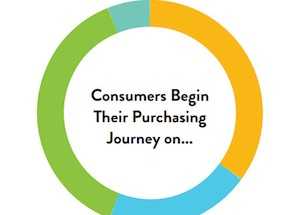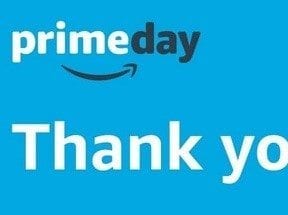Are you considering advertising on Amazon this holiday season? Curious if Amazon’s “Sponsored Products” campaigns are worth the money? In this article, I’ll offer a high-level analysis to help determine if Sponsored Products are a good option for your business. In a follow-up article, I’ll review tips to get the most out of Sponsored Products.
What Are Amazon Sponsored Products?
Amazon has a confusing amount of advertising programs, with often nondescript and confusing names. The best way to explain Sponsored Products, for me, is to show what they look like.
Sponsored Products are image ads. They appear in a several different places in Amazon. Sponsored Products can look an awful lot like search results and intermingle with them, which is part of their power. Of the six products in this screenshot, below, the top three listings are ads, labeled “Sponsored” in dark gray font.
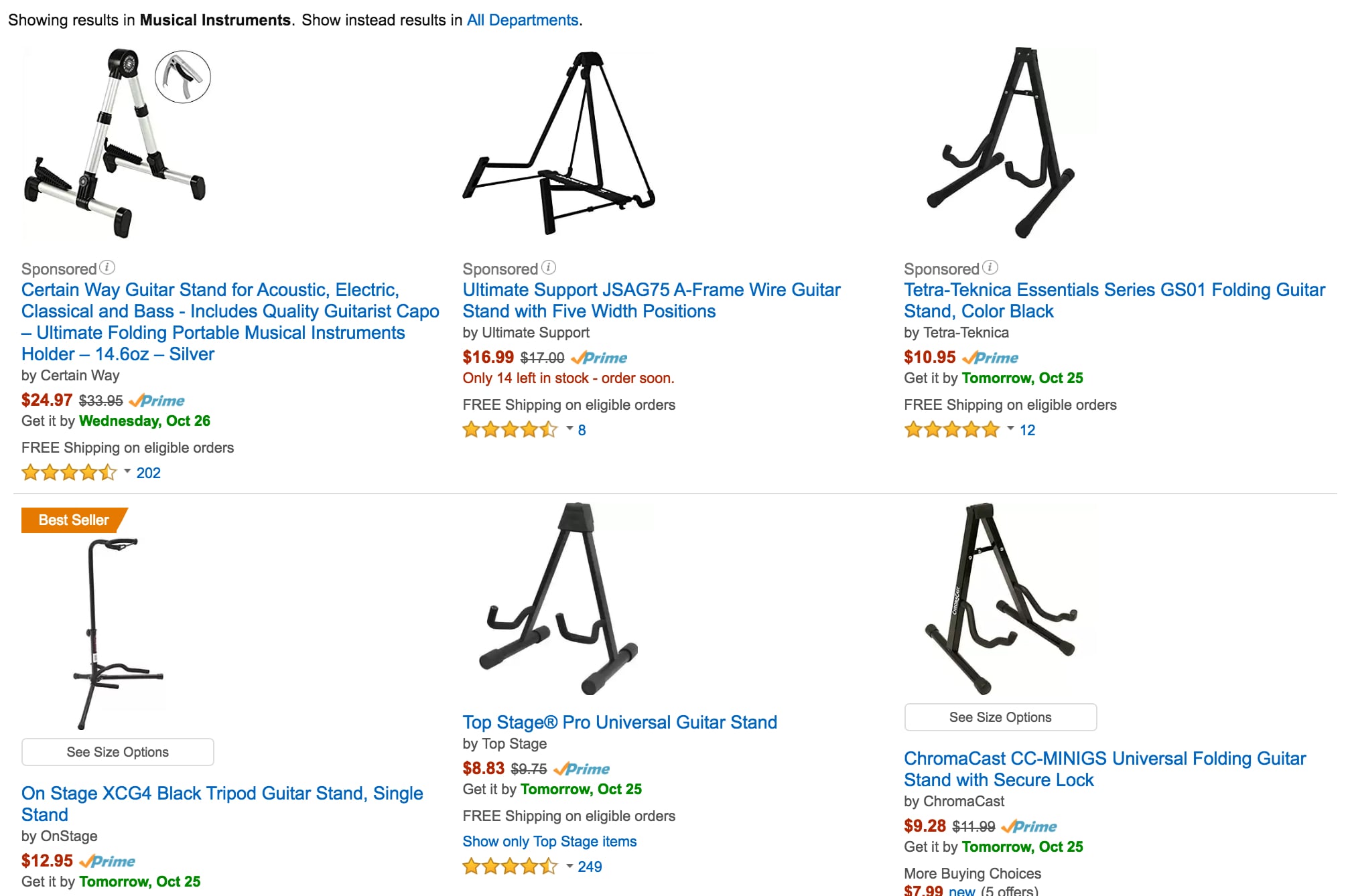
Sponsored products on Amazon look a lot like normal products, with only a line of dark gray text distinguishing them. Click image to enlarge.
—
Sponsored Products also can be set aside from the search results, appearing more like Google Shopping ads. Here Amazon Sponsored Products are seen on the right, boxed off, and labeled “Sponsored.”
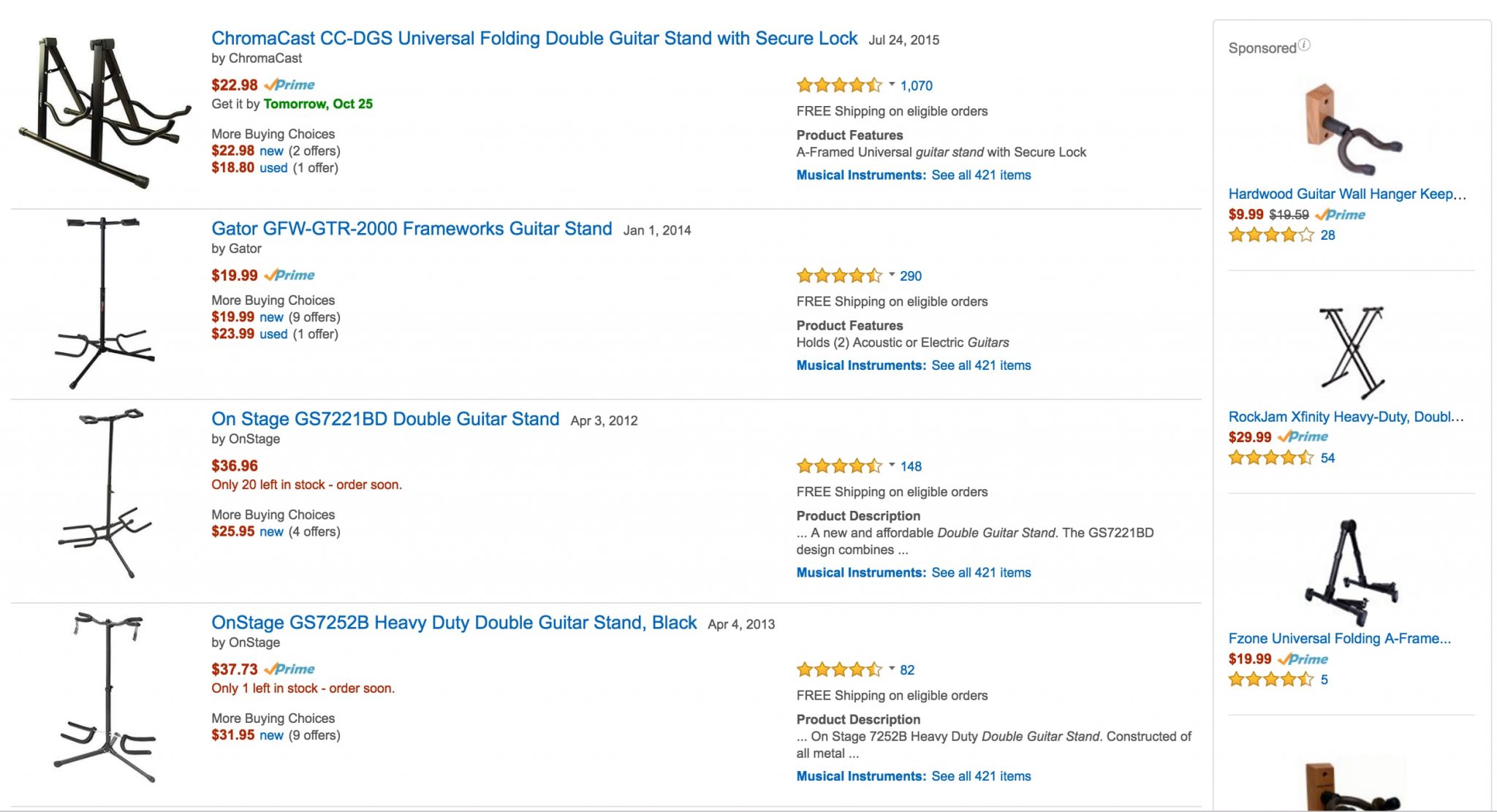
Sponsored Products can also appear on the side of search results, similar to Google ads. Click image to enlarge.
—
Amazon is not shy about selling the space on its search results page. You may well see ads occupying both the top and side space. Once a shopper clicks through to a product detail page, sponsored listings can be there, as well.

Sponsored Products ads can also appear in the “Related” section of product pages. Click image to enlarge.
How Do Sponsored Products Work?
Sponsored Products use keyword-based targeting that is much like advertising in Google or Bing. You can provide the keywords, or let Amazon find the keywords for you automatically. While this keyword-based targeting is technically similar to AdWords or Bing Ads, the strategy on Amazon greatly differs
Like classic paid search ads, with Sponsored Products you pay a per-click fee only when a shopper clicks your ad. That click takes an Amazon shopper directly to an Amazon product detail page, where the shopper can buy the product from you. The Amazon product detail page acts as the landing page of the ad.
There are requirements to being in the program. Before starting, read Amazon’s overview. Here are the basic prerequisites:
- You have an active seller account on Amazon;
- You can ship to all United States addresses;
- You have active product listings in at least one of the categories listed in the official Sponsored Products’ “Top Questions”;
- You sell new products, not used or refurbished.
Buy Box Requirement
There’s one more qualification for eligibility: You need product listings eligible for the Buy Box.
A Buy Box requirement may seem a bit odd. Sellers who have the Buy Box already see the advantage of being the default option to buy from. With Sponsored Ads, Amazon is compounding the advantages of the Buy Box for sellers that are dominant, rather than leveling the playing field. That can seem off-putting, at first.
But the limitation makes sense. Remember that the landing page of a Sponsored Product ad is an Amazon product details page. By sending traffic to a product listing where you didn’t own the Buy Box, very likely you’d be paying for traffic for another seller.
Also, note that entering the Sponsored Products program will not get you the Buy Box. That’s a common question. If you try to advertise a product where you don’t control the Buy Box, Amazon won’t run your ad. Amazon will note the issue in the campaign manager.
When to Use Sponsored Products
In Seller Central, Amazon suggests when to use Sponsored Products: “Consider using Sponsored Products to increase product visibility, for new offers, unique selections, offers with low glance views, clearance items, and seasonal promotions.”
But I go much further: Consider trying Sponsored Products if they’re available to you, for multiple reasons.
First, Sponsored Products ads dominate the Amazon’s search results page, a trend that’s only getting more exaggerated.
Amazon famously tests its search result and listing pages diligently — and Amazon does what’s best for Amazon. The profit that Amazon sees on pages with Sponsored Products is presumably excellent, as Sponsored Products are spreading liberally. Moreover, Amazon has noted in Seller Central that it reserves the right to show the ads in more places.
When Sponsored Products first launched, Amazon displayed only a handful of such listings in the right column. But now, Sponsored Products are frequently at the top of the page and in the right column, represent all of the upper listings.
A Window to Amazon’s Search Data
My second point is perhaps the most important: Sponsored Ads in Amazon are worth it because of the Amazon search query data they provide. Amazon is mimicking a practice on Google’s platforms, where detailed search query data is available only if you spend money on advertising.
Advertise with Sponsored Products and you get actual Amazon search data, which can greatly improve your advertising campaigns. Here’s how Amazon suggests you do that — from its Advertising Reports page.
- Identify high-performing search terms.
- Add these high-performing terms as keywords to the appropriate ad group and consider adjusting your bids to increase impressions.
- Monitor performance and adjust.
The Amazon search data is available as a raw text file, and looks like this when opened in Excel. Search queries are highlighted in yellow.
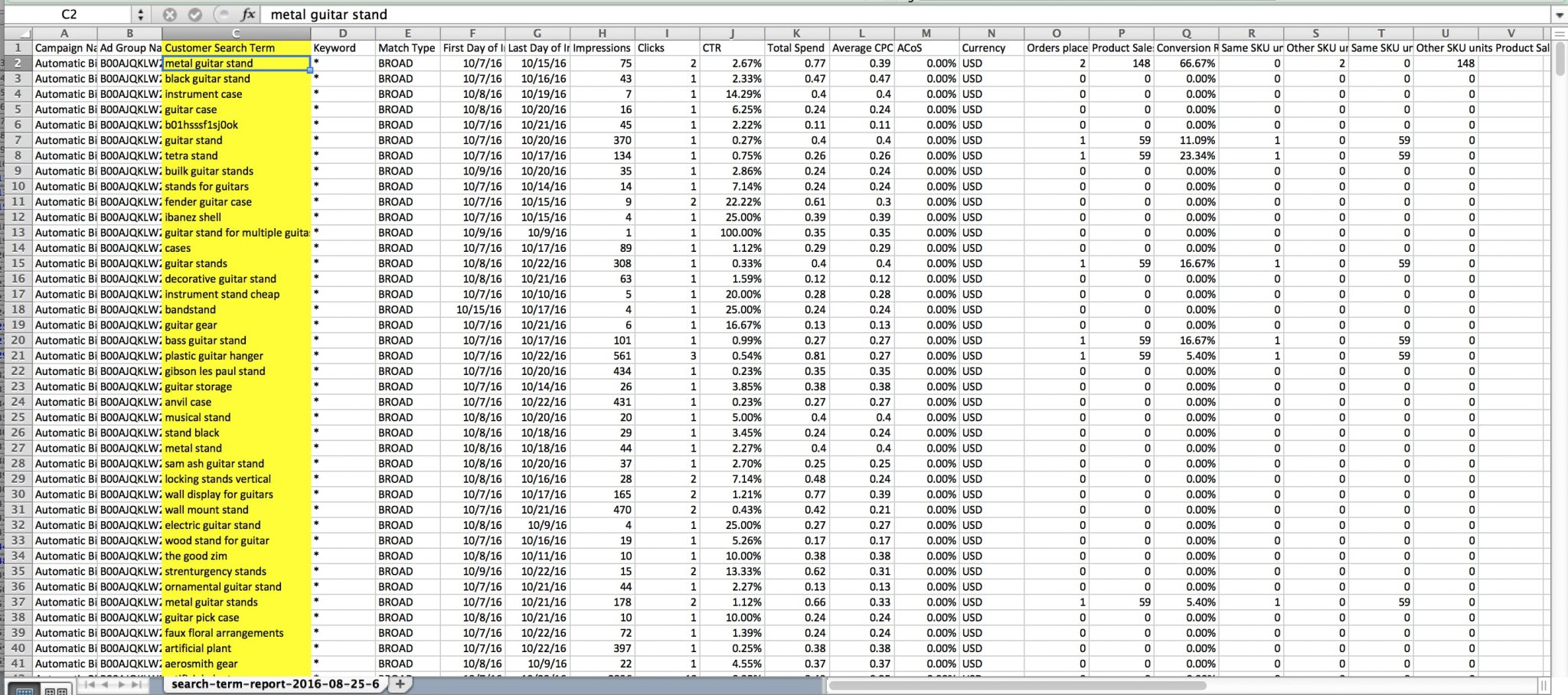
The Amazon search data is available as a raw text file, and looks like this when opened in Excel. Search queries are highlighted in yellow. Click image to enlarge.
This valuable Amazon search-query data can be used for many other purposes, though.
For example, the data can and should inform the words you use in your titles, descriptions, and marketing bullets so that your Amazon listings are optimized for what people are actually searching for. This improves your chances of appearing in Amazon’s search results and, also, helps resonate with shoppers, increasing sell-through rates.
Because you’re receiving volume data on these Amazon search queries, use it to prioritize which products to list. Many sellers even use that data to inform their merchandizing choices as they observe trends in the search queries around their core products.
For example, say you sell wall-mounted guitar hooks and you see a surge in queries for “metal guitar stands.” Your inventory plans may change based on what you uncover in the actual data.
In some situations, Amazon’s search query data can even provide ideas for edits on other platforms, such as optimizing titles and descriptions in Google Shopping. (What inventive ways can you think of to use the data? Please let us know in the comments, below.)
New Sellers and New Products
Amazon presumably wants to maximize profits from search queries. To do this, Amazon uses past performance to predict how searchers will act. The sales volume and sell-through rate at the seller level, and even more at the product level, have historically greatly impacted the top placement in the search results — recognizing sales volume and sell-through rates are not the only factors.
Yes, you can and should optimize Amazon listing titles, descriptions, and marketing bullets to help get to the top of the Amazon search results. But having a record of aligning with Amazon’s financial interests by selling a lot of product is even more powerful. That is a huge disadvantage to new sellers and new products.
But Sponsored Products offer a workaround and a counterweight.
Use Sponsored Products to force your products to the top of the search results. If you have the Buy Box for your product and you’re relevant to the search query you’re targeting, Sponsored Products act as an important shortcut. You can selectively push your top-performing products, and, also, get traction on new listings more quickly. As we face the holidays, that’s particularly important for sellers with seasonal items.
Start Small, with Little Risk
Because the cost per click is rarely over $0.35 in my experience, you do not have to invest significant money to try Sponsored Products. Also, Amazon offers free trials from time to time. Check the Sponsored Products page for current offers and their details.
Editor’s note: See the author’s follow up to this article, at “Strategy for Amazon Sponsored Product Ads.”


